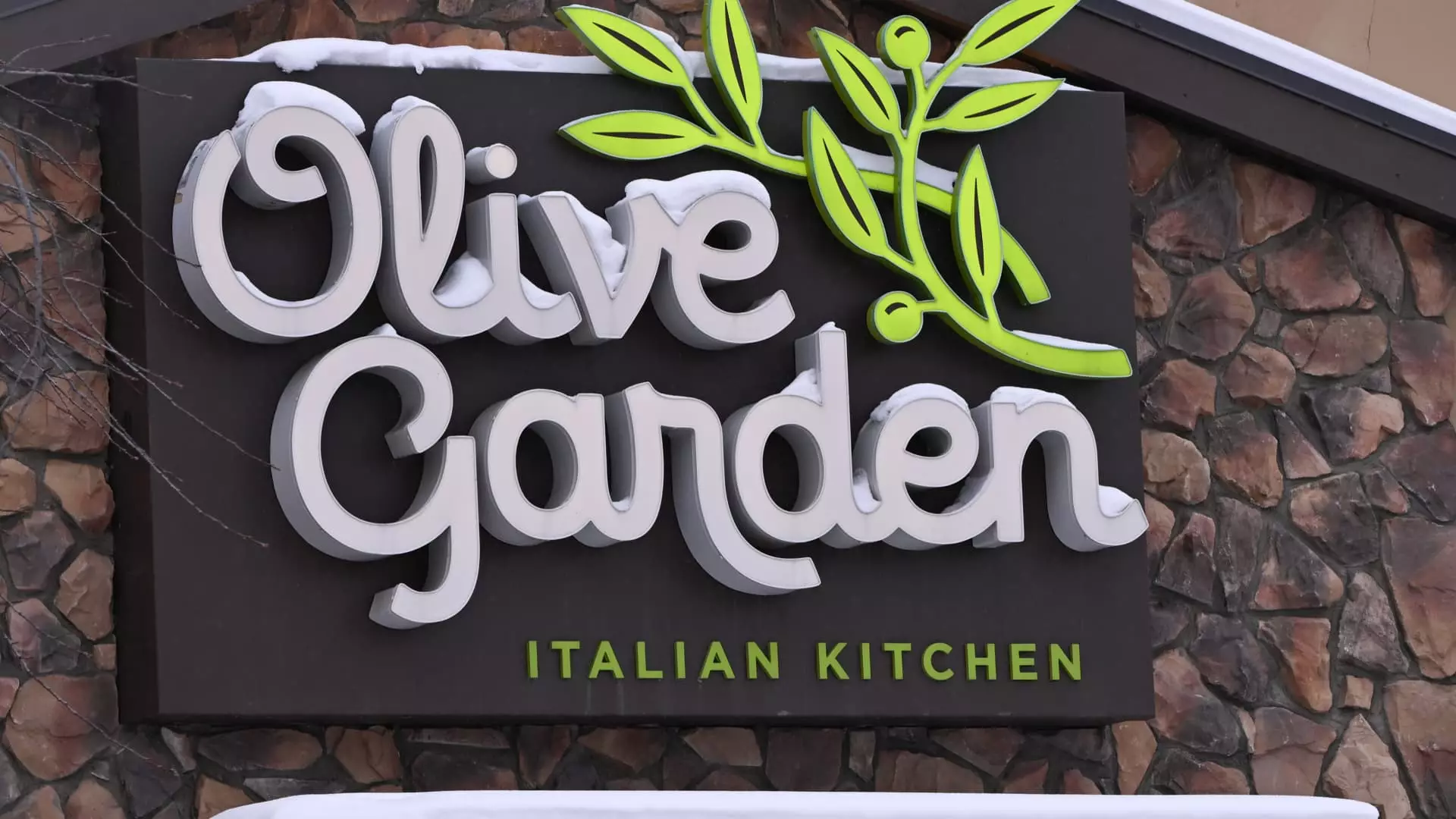Darden Restaurants, parent to famous chains like Olive Garden and LongHorn Steakhouse, has revealed an alarming dip in its financial performance, raising eyebrows among investors and financial analysts alike. Their recent quarterly report was anything but rosy; it showcased a stark divergence between actual performances and the expectations of Wall Street. Despite managing to achieve an adjusted earnings per share of $2.80 against an expectation of $2.79, the total revenue of $3.16 billion fell short of the anticipated $3.21 billion. Such discrepancies indicate a troubling trend where celebrated brand names within Darden’s portfolio are struggling to keep pace with market expectations.
Underperformance of Key Brands
In the world of dining, customer satisfaction is paramount, and both Olive Garden and LongHorn Steakhouse have begun to tarnish their once shining reputations. Olive Garden’s same-store sales growth was merely 0.6%, significantly below the anticipated 1.5%. LongHorn Steakhouse fared similarly, with a growth of just 2.6%, lagging behind the expected 5%. These restaurants are not mere numbers; they embody the essence of Darden’s identity. Their underwhelming performance is not just an insignificant blip but a signal that something is amiss within the brand’s operational strategies and consumer engagement approaches.
Concerns in Darden’s Premium Dining Segment
The fine-dining segment, which encompasses prestigious establishments like The Capital Grille and Ruth’s Chris Steak House, has experienced declines in same-store sales by an alarming 0.8%. This trend begs the question: is there a growing disconnect between customers and the idea of premium dining? The high costs associated with fine dining can dissuade even the most enthusiastic diners, especially in an economic climate where financial prudence is becoming the norm. This decline signals an urgent need for Darden’s leadership to rethink their fine dining strategy before they lose customer loyalty and market share in an increasingly competitive landscape.
Future Outlook: Cautious Optimism But Shifting Realities
Looking ahead, Darden plans to reiterate its annual forecast for revenue at $12.1 billion, a seemingly positive indication of stability. Yet, when it comes to adjusted earnings, it’s prefacing a narrower outlook of $9.45 to $9.52 per share. Notably, their inclusion of acquired chains like Chuy’s in future projections paints an interesting picture. However, the Tex-Mex restaurants won’t contribute to same-store metrics until fiscal 2026, indicating a prolonged wait for tangible results from its expansion strategy. Such delays can introduce uncertainty about the company’s adaptability amid an ever-evolving dining landscape.
The Bigger Picture: Broader Implications for the Industry
Darden’s struggles embody broader trends plaguing the restaurant industry today. As consumer behaviors shift, driven by factors like inflation and evolving dining preferences, brands must adapt quickly or risk irrelevance. Darden’s challenges serve as both a cautionary tale and a case study, signaling that established giants cannot rest on their laurels. If they fail to innovate and connect with patrons genuinely, they may find themselves in the unfortunate position of watching once-loyal customers drift to newer or more vibrant dining experiences.

